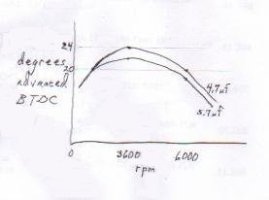- Thread starter
- #26
Jaguar---Dude, you are out of control!!! Wish I could pull off that sort of thing. Really looking forward to you posting the timing curve---as it looks like there is a never ending debate regarding adv/ret and it's effects. FWIW, a two stroke is NOT the same as a four stroke. The static timing has little to do with the dynamic timing of the CDI. With the "modern" two stroke there are some counterintuitive constructs that effect ignition timing. Some of those include---the effect of port timing vs. valves---the ram effect of the pipe---and and the lowering of compression at high RPM(unlike a four stroke), which creates a combustible mixture with a different density and different burning rate. THERE---hope that clears things up! :eek:


